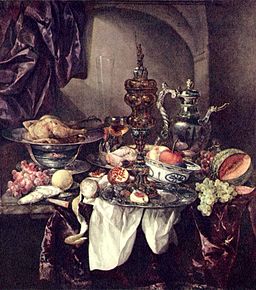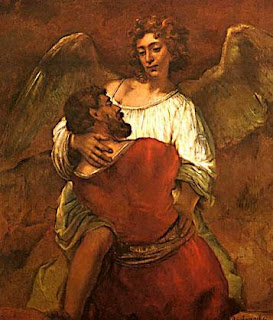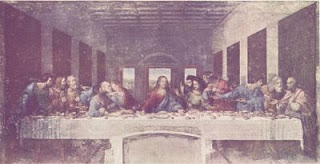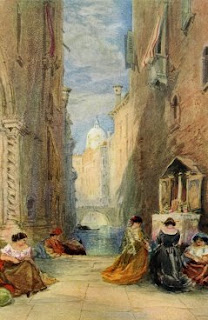MONA LISA. In the Louvre. No. 1601. 2 ft 6 ½ ins. By 1 ft. 9 ins.(0.77 x 0.53)
Early in 1503 Leonardo da Vinci was back again in Florence, and set to work in earnest on the "Portrait of Mona Lisa", now in the Louvre (No. 1601). Lisa di Anton Maria di Noldo Gherardini was the daughter of Antonio Gherardini. In 1495 she married Francesco di Bartolommeo de Zenobi del Giocondo. It is from the surname of her husband that she derives the name of "La Joconde," by which her portrait is officially known in the Louvre. Vasari is probably inaccurate in saying that Leonardo "loitered over it for four years, and finally left it unfinished." He may have begun it in the spring of 1501 and, probably owing to having taken service under Cesare Borgia in the following year, put it on one side, ultimately completing it after working on the "Battle of Anghiari" in 1504. Vasari's eulogy of this portrait may with advantage be quoted: "Whoever shall desire to see how far art can imitate nature may do so to perfection in this head, wherein every peculiarity that could be depicted by the utmost subtlety of the pencil has been faithfully reproduced. The eyes have the lustrous brightness and moisture which is seen in life, and around them are those pale, red, and slightly livid circles, also proper to nature. The nose, with its beautiful and delicately roseate nostrils, might be easily believed to be alive; the mouth, admirable in its outline, has the lips uniting the rose-tints of their colour with those of the face, in the utmost perfection, and the carnation of the cheek does not appear to be painted, but truly flesh and blood. He who looks earnestly at the pit of the throat cannot but believe that he sees the beating of the pulses. Mona Lisa was exceedingly beautiful, and while Leonardo was painting her portrait, he took the precaution of keeping some one constantly near her to sing or play on instruments, or to jest and otherwise amuse her."
Leonardo painted this picture in the full maturity of his talent, and, although it is now little more than a monochrome owing to the free and merciless restoration to which it has been at times subjected, it must have created a wonderful impression on those who saw it in the early years of the sixteenth century. It is difficult for the unpractised eye to-day to form any idea of its original beauty. Leonardo has here painted this worldly-minded woman—her portrait is much more famous than she herself ever was—with a marvellous charm and suavity, a finesse of expression never reached before and hardly ever equalled since. Contrast the head of the Christ at Milan, Leonardo's conception of divinity expressed in perfect humanity, with the subtle and sphinx-like smile of this languorous creature.
The landscape background, against which Mona Lisa is posed, recalls the severe, rather than exuberant, landscape and the dim vistas of mountain ranges seen in the neighbourhood of his own birthplace. The portrait was bought during the reign of Francis I. for a sum which is to-day equal to about £1800. Leonardo, by the way, does not seem to have been really affected by any individual affection for any woman, and, like Michelangelo and Raphael, never married.
In January 4, 1504, Leonardo was one of the members of the Committee of Artists summoned to advise the Signoria as to the most suitable site for the erection of Michelangelo's statue of "David," which had recently been completed.
Reference:
LEONARDO DA VINCI
By MAURICE W. BROCKWELL

















































